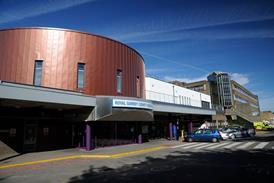The must-read stories and debate in health policy and leadership.
- Today’s RTT insight: Rob Findlay on waiting times
- Today’s turnaround: Former special measures trust’s main hospital rated ‘outstanding’
It may be some time before we have solid data on how the health service changed during the peak of the covid-19 response in April, including its impact on elective care.
However, HSJ analysis suggests up to 10,000 people may be waiting more than a year for elective treatment as a result of the pandemic. At the end of March 7,364 patients were waiting 48-52 weeks for treatment, on top of 3,097 already waiting a year.
With the slowdown and eventual suspension of non-urgent electives, it therefore seems the number of year-plus waiters could have passed 10,000.
While some patients may have received routine treatment during the 48-52 week period, or transferred to the private sector, these numbers give an early indication of how the pandemic has affected the health service’s non-covid patients.
Forthcoming concrete data will give this certainty but as one consultant has already told HSJ: “Next to nothing has been treated privately or in NHS capacity. The non-admitted element of it in particular is open to patients taking themselves off the list due to fear of covid.”
Against all odds
There are few good things to come out of the covid-19 crisis but perhaps one has been a significant improvement in ambulance response times.
March was horrendous for many ambulance services – especially London Ambulance Service Trust – and performance against the key category 2 response time was the worst ever at more than 32 minutes (the target is 18).
But ambulance services have pulled out all the stops since then. Many have taken on extra staff (including final year paramedic students), enlisted help from the military and firefighters, and asked previous employees to come back: all of this has helped to mitigate the impact of widespread staff sickness.
Mutual aid has meant staff have moved between services to support those most under pressure.
This work has paid off. The number of incidents that ambulance services had to deal with in April was down 9 per cent on March (and slightly down on April last year) but performance has been transformed. Against categories two, three and four response times were the best since the current system of categories was introduced – and category one times were only just outside the seven minute target.
It may not last – the public may want to go to hospitals more as the crisis passes – but the services can pat themselves on the back for a considerable achievement.

























No comments yet